10 product ideation techniques to spark innovation
Nobody wants a new product or feature that's just... meh. Enter product ideation techniques. From classic brainstorming to modern approaches like "painted door tests," each approach helps you transform your ideas into features people will actually buy and use.


Innovation is reshaping our work lives. Now, imagine you're in a role where you're expected to pull brilliant ideas out of thin air every single day. Welcome to the world of product ideation, folks!
However, nobody wants a new product or feature that's just... meh. Enter product ideation techniques - critical tools for developing successful products and features.
Like a chef in the kitchen of innovation, a product ideation technique blends user feedback, customer pain points, market opportunities, and business strategy.
Today, we'll explore ten powerful product ideation methods, from classic brainstorming to modern approaches like "painted door tests," each approach helps you with problem-solving and transform your ideas into features people will actually buy and use.
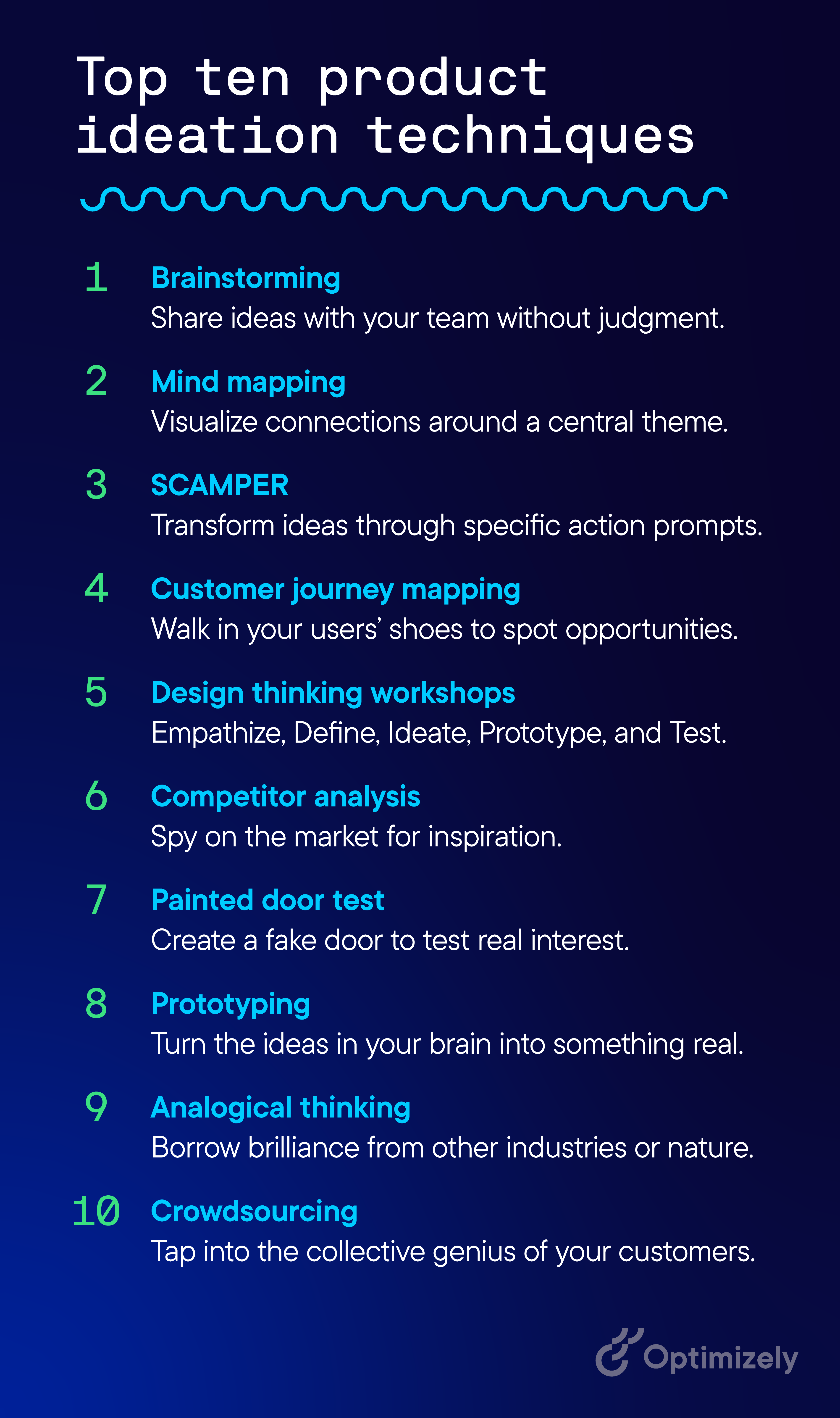
Image source: Optimizely
Top 10 product ideation techniques
Here's our rundown of the top 10 product ideation techniques that'll have you flexing your innovation muscles in no time:
-
Brainstorming
Remember that scene in "The Office" where Michael Scott yells "BRAINSTORM!" and everyone just stares at him?
Yeah, don't do that.
Instead, gather your squad and create a judgment-free zone for idea sharing. Remember quantity over quality is key in the initial stages. No idea is too good or bad that it can't be validated.
Then there is reverse brainstorming. Instead of asking "How do we solve this?", ask "How could we make this problem worse?"
It's like looking at the world upside down for innovative solutions – you might just see something you missed before that could help you unlock a new idea to explore.
-
Mind mapping
Do you have a tangled mess of ideas making your brain go all spaghetti? Mind mapping is a great exercise that will help you organize your thoughts in a coherent way. your thoughts a direction. Start with a central theme and watch your ideas branch out like a tree. This method aka brainwriting helps in seeing relationships between different concepts and can spark new connections.
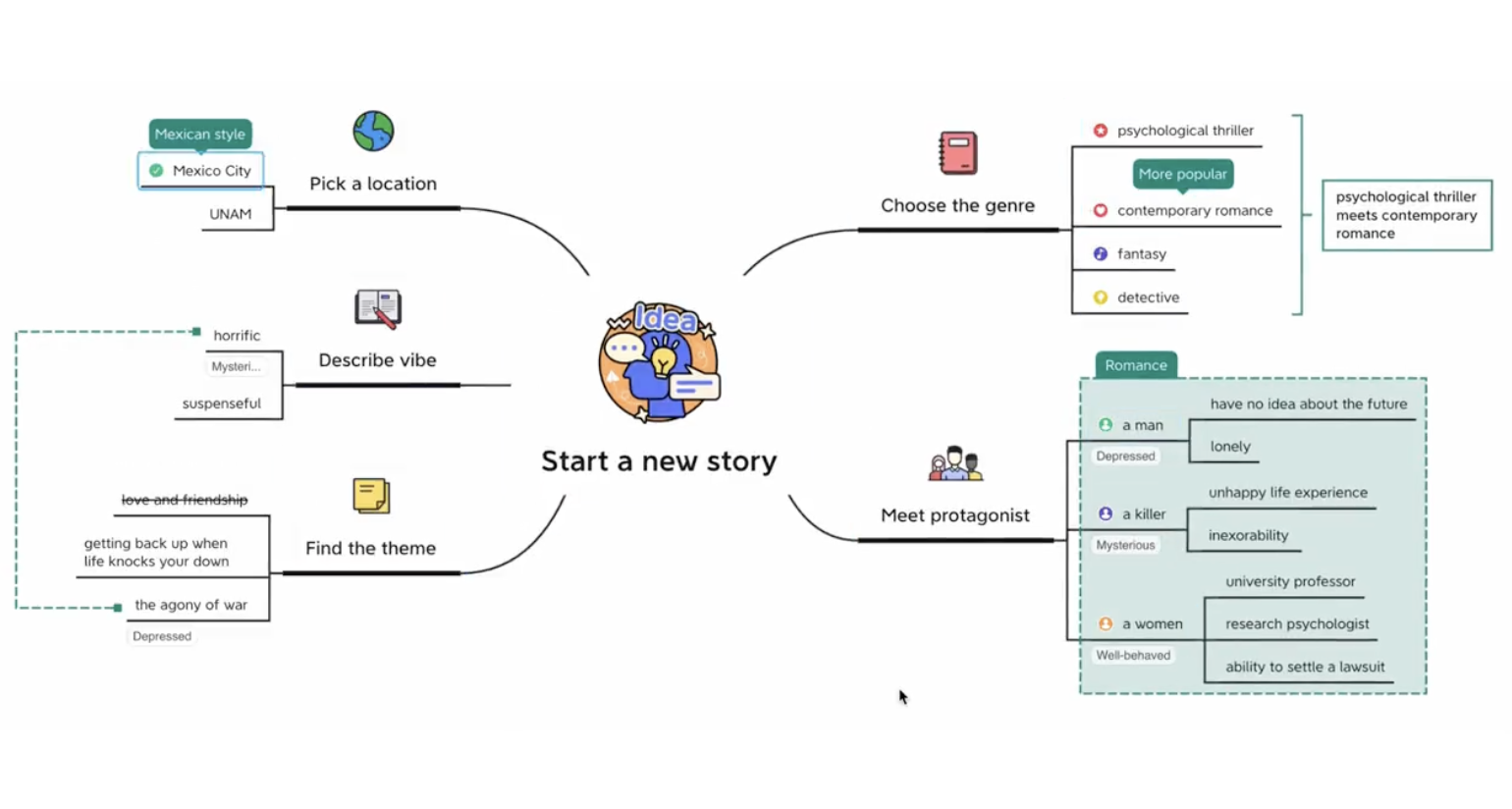
Image source: XMind
-
SCAMPER method
SCAMPER stands for Substitute, Combine, Adapt, Modify, Put to another use, Eliminate, Reverse/Rearrange.
SCAMPER gives your team members and their product ideas a creative angle by asking specific questions. For example, what would happen if you eliminated a feature from your product, or combined it with another?
Apply these actions to your existing products or ideas to generate new concepts.
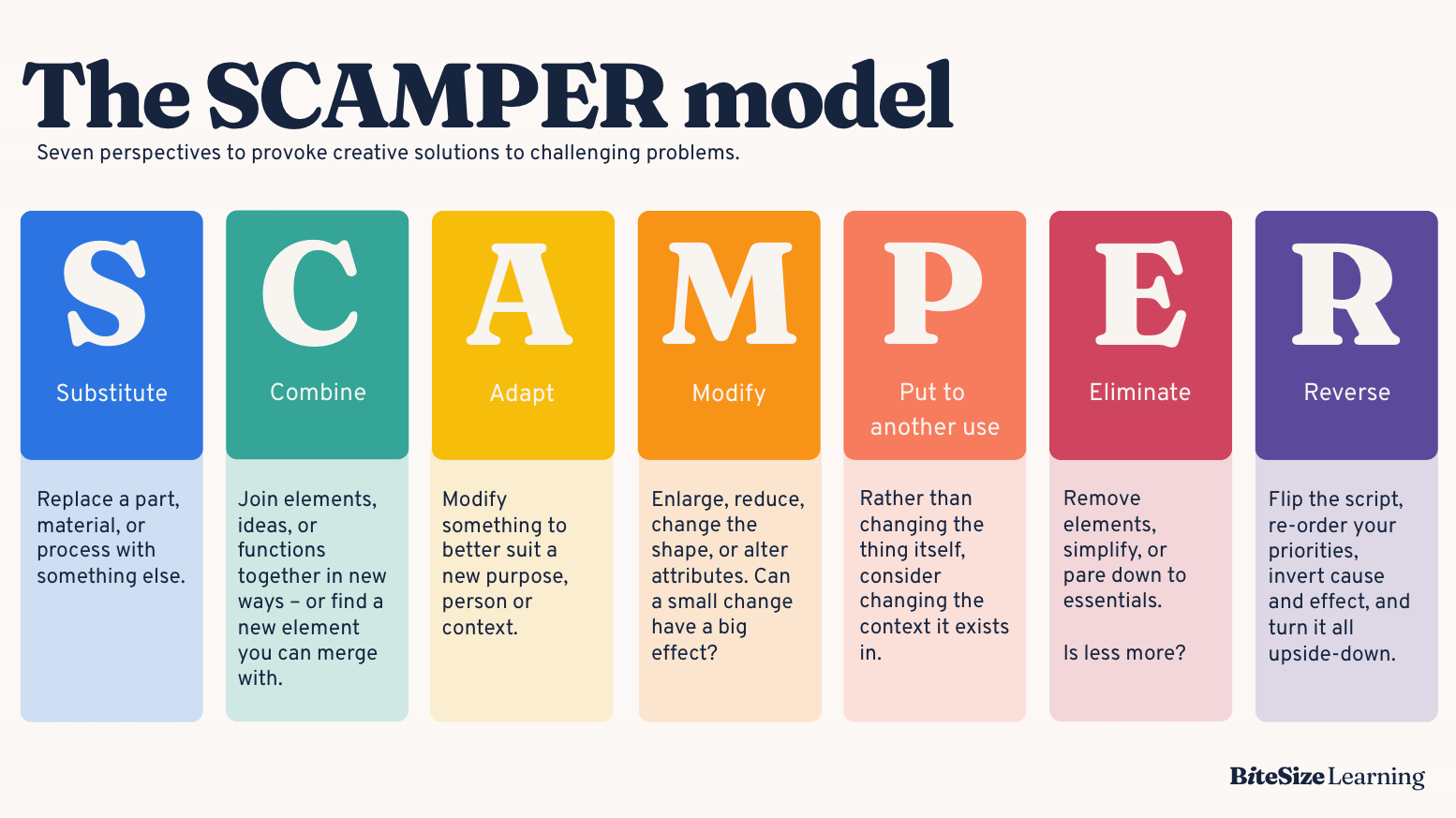
Image source: BiteSize Learning UK
-
Customer journey mapping
Dive deep into your customers' world, and uncover those hidden pain points. Through customer journey mapping, you can create a visual representation of your customer’s experience with your product and service. It'll allow you to identify customer pain points and improve user experience at each stage of interaction.
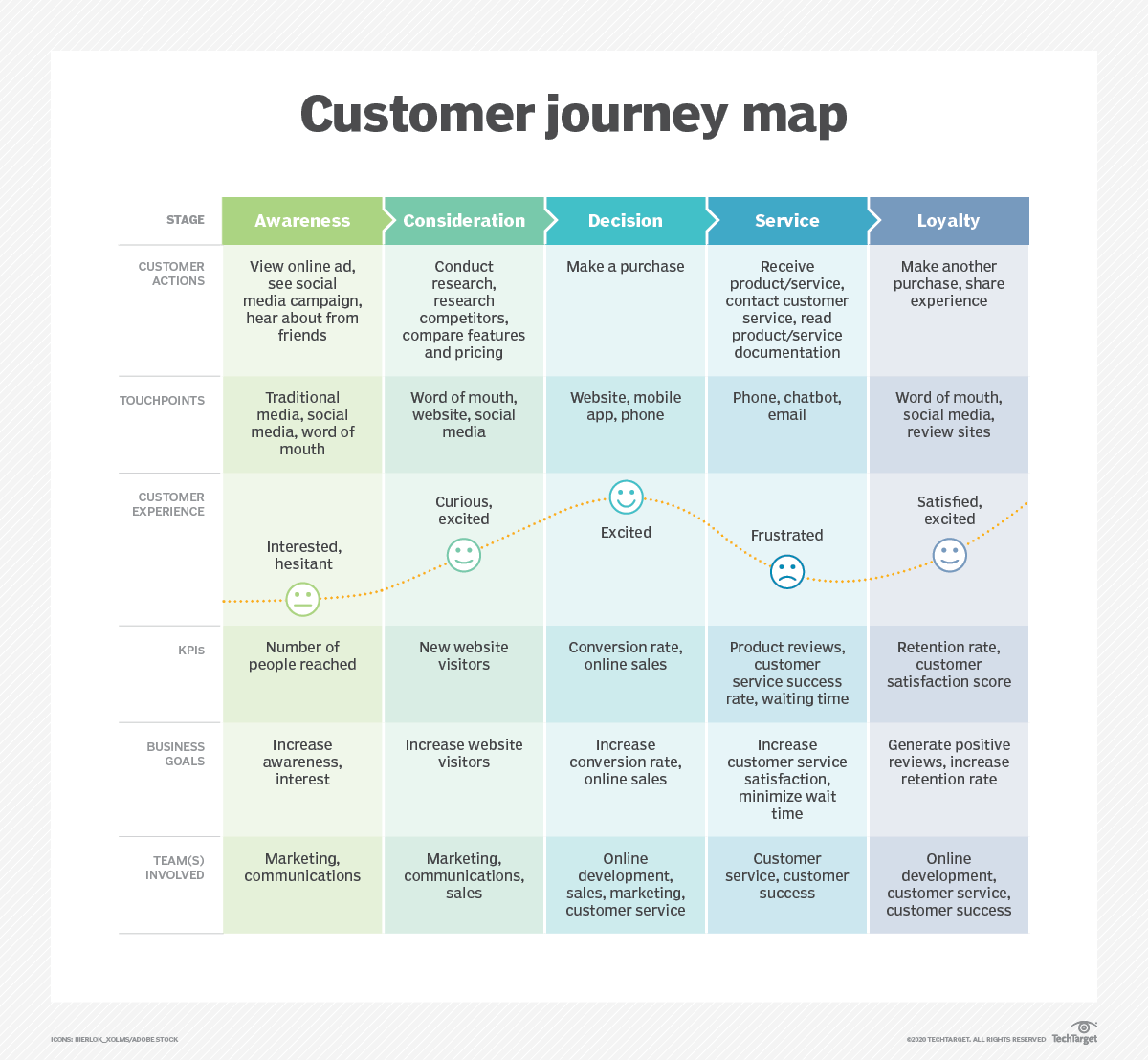
Image source: TechTarget
-
Design thinking workshops
Think of this as a product design party where you gather your cross-functional team – from tech nerds to marketing nerds. The goal? Understand users and their needs so well, that you could finish their sentences (in a non-creepy way, of course) and generate fresh ideas.
These workshops typically involve five stages: Empathize, Define, Ideate, Prototype, and Test. The goal is to develop innovative ideas that are user-centric.
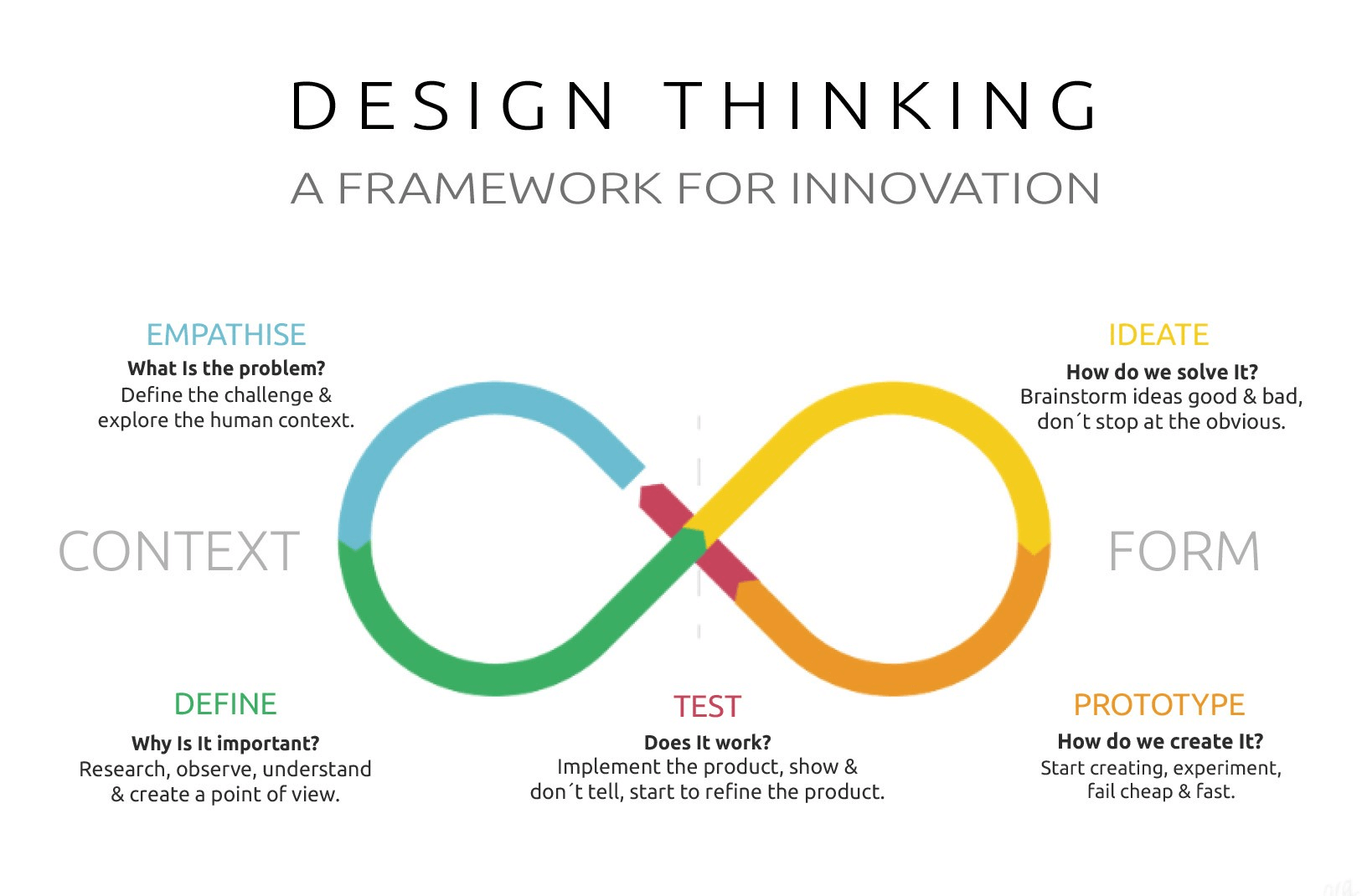
Image source: Miro
-
Competitor analysis
This step could also be called legal spying. Systematically analyze your competitor’s products, strategies, and market positioning. Look for gaps in their offerings that you could potentially fill. This isn’t about copying but also understanding the market landscape and identifying opportunities to set yourself apart from the competition.
Some key customer-centric questions you can ask:
- What's hot in the market?
- What are your competitors up to?
- What's going viral in your boring industry right now?
It's like being James Bond, but instead of martinis, you're shaken (not stirred) by market insights.
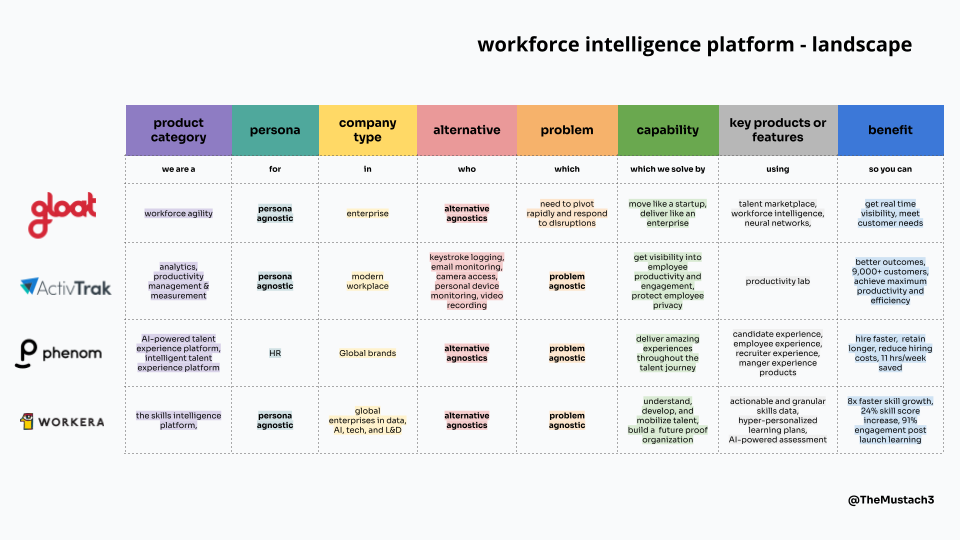
Image source: Workera case study
Test + Learn: Experimentation
-
Painted door test
No, you don't have to redecorate your office. Running a painted door test is a great way to test your ideas without building a thing. Like creating a fake door to see if anyone knocks but for products.
For example, you might add a button for a new feature on your website and track how many people click it. This helps validate creative ideas before investing in developing potential solutions.
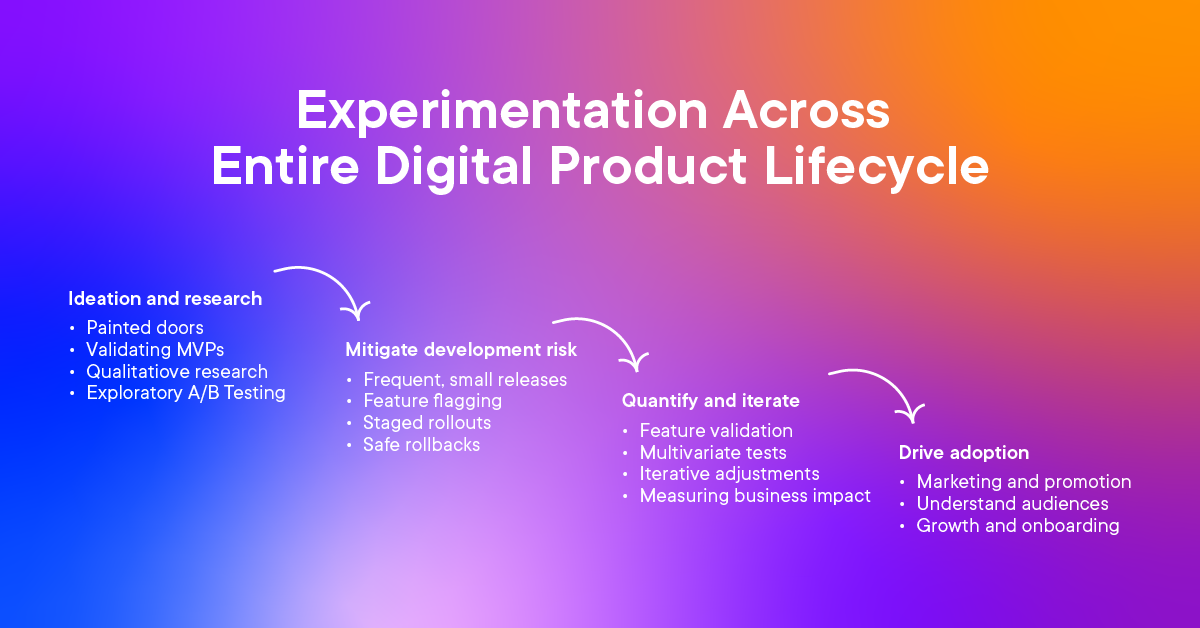
Image source: Optimizely -
Prototyping
Everyone wants to turn their brain farts into something real. Well, prototyping is how you find out if an idea is worth investing time and money into.
ClassPass tested 8 prototypes before their website redesign.
With prototyping, you can get the first version of your idea ready, gather feedback, and save your team from building the Titanic of products (you know, the one that sinks).
Prototypes can be simple whiteboard, paper sketches and also interactive digital models. The goal is to make your ideas tangible and testable as early as possible in the development process.
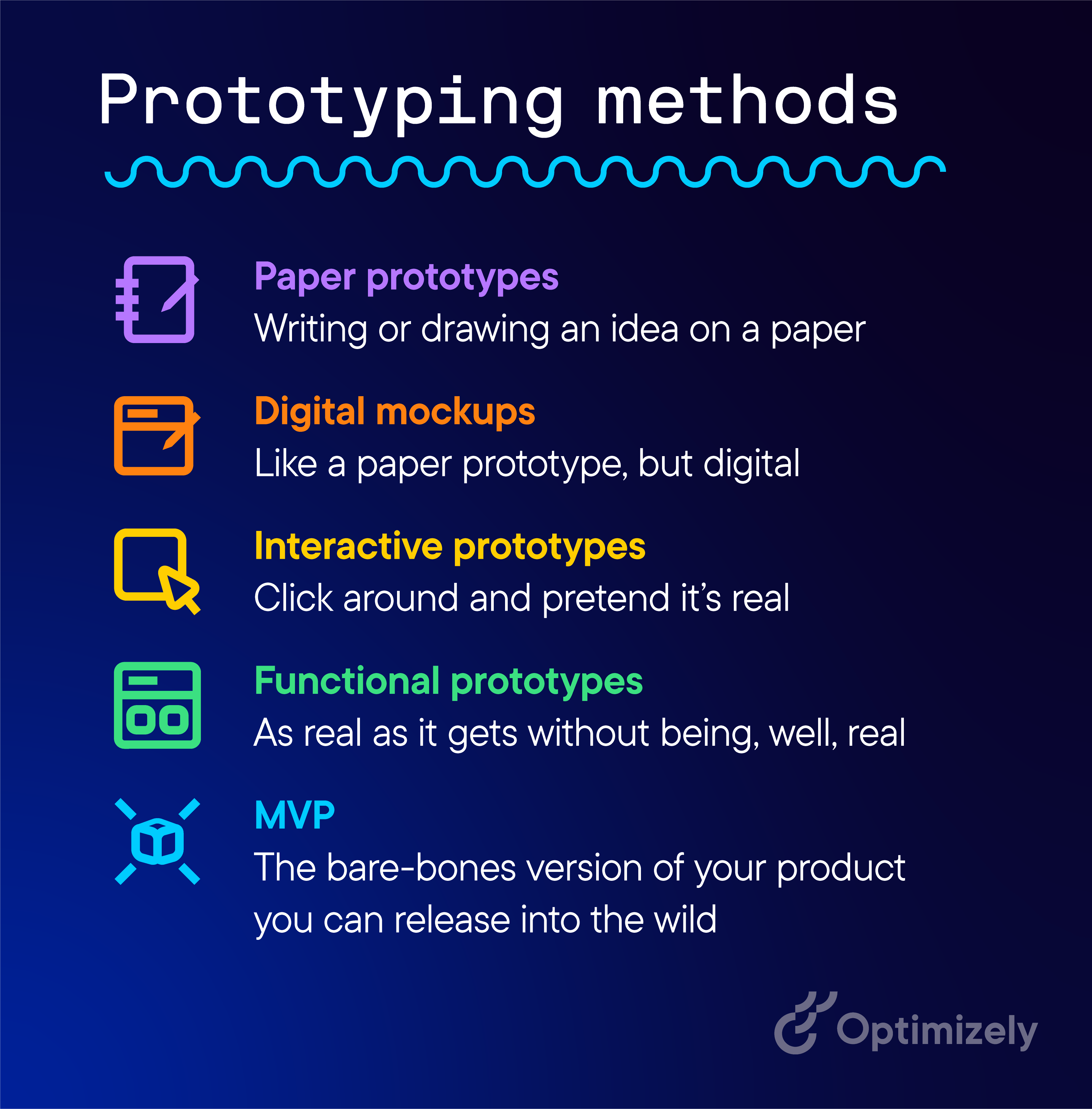
Image source: Optimizely -
Analogical thinking
No need to reinvent the wheel when you can steal – er, borrow – ideas from other industries? Look for inspiration in unexpected places. Look at nature, art, or that weird gadget your friend got you for your Birthday. Inspiration is everywhere if you look hard enough. This technique encourages creative, cross-disciplinary thinking.
-
Crowdsourcing
People love feeling heard, so tap into the collective brainpower of your customers. It's like having a massive think tank at your fingertips.
You see, two heads are better than one (and a hundred or thousand are even better). Examples could include: running idea contests, setting up feedback forums, or using social media to gather input.
That's all. Ten product ideation techniques to kickstart your product development lifecycle and remove the product marketing challenges.
Now go forth and innovate like your career depends on it (because, let's face it, it kind of does)!
How to implement product ideation techniques
Implementing any product ideation technique effectively requires a strategic approach tailored to your individual project needs and team dynamics.
Start by selecting the most appropriate technique for your situation - for instance, brainstorming for quick idea generation, mind mapping for complex problems, or SCAMPER for transformative thinking. To maximize results, combine multiple techniques, such as initiating a brainstorming session, organizing ideas through mind mapping, and turning concepts into concrete hypotheses using SCAMPER.
For any long-term success, you need to create a culture of continuous ideation. It is like turning your workplace into a year-round idea festival.
Here's how to keep things going:
- Encourage off-the-wall ideas.
- Schedule regular ideation sessions.
- Reward the process, not just the outcome.
- Designate physical or virtual spaces for sharing ideas.
- Managers ideate with your teams and show them how it's done!
- Mix up teams and departments
- Use games, challenges, or themed sessions to keep things fresh.
Measuring the success of your product ideation techniques
That old adage remains true: What gets measured, gets managed.
-
Key metrics to track
Tracking the right metrics is key to supporting the development of your ideas with cold, hard data. Focus on:
- Idea quantity: How many ideas are you churning out? More isn't always better, but it's a start.
- Idea quality: Use a scoring system to check if your ideas solve real problems or just create more.
- Implementation rate: How many ideas actually make it to implementation? If this number is lower than expected, it's time to rethink this process
- Time to market: How fast can you go from "Eureka!" to "Buy now!"?
- User feedback: The "Do they want what you're selling?" metric. Track those ratings and reviews. Plus, invest in customer service.
- ROI: The "show me the money" metric. Track the revenue your implemented ideas are bringing in.
-
Evaluating and prioritizing ideas
It's time to separate the game-changers from the "maybe laters." Take each idea, gather the diverse perspectives and figure out:
- Feasibility: Is it doable? (Hint: Testing is the way to validate every idea)
- In-depth analysis: Will it make any potential impact and align with your business goals?
- Thinking process: Can you pull it off with the resources you have?
Use techniques like weighted scoring or the ICE (Impact, Confidence, Ease) framework to objectively rank ideas. Give your top contenders a quick reality check with some customer feedback.
Remember, we're after quality and relevance, not just quantity here. Keep an eye on what's working and what's not in your evaluation process, and don't be afraid to switch things up as your business evolves.
By systematically evaluating and prioritizing ideas, you can measure the effectiveness of your ideation techniques and focus resources on the most promising concepts, ultimately improving your product development outcomes.
How experimentation can supercharge your ideation process
Now, we may be a bit biased (Optimizely, represent!), but the numbers don't lie. We've helped thousands of customers incorporate a culture of experimentation, A/B test their product ideation process and deliver features without risks. You can significantly improve your product ideas and more, including:
- Validating assumptions: No more boardroom battles over whether users will dig feature A or feature B. Just test it. Let the data be your referee.
- Generating new ideas: Sometimes, the wildest insights come from unexpected sources. Experimentation is like opening Pandora's box of "aha!" moments.
- Reducing risk: Why gamble your entire budget on a guess? Test the waters before diving in headfirst. Have a product development safety net. Iterative
- improvement: A/B testing isn't just for picking button colors. Use it right and refine your entire product development process.
- User needs: Keep your product focused on what users actually want, not what your CEO's pet rock thinks they want.
- Culture of innovation: Foster a culture where ideas are celebrated, tested, and iterated.
Listen up, product teams...
Your ideation process for your target audience should be as diverse as your product lineup. It's time to expand your creativity toolkit beyond your go-to techniques. Try brainstorming one week, mind-mapping the next, and perhaps experiment with SCAMPER after that.
Remember, variety in your ideation process isn't just about keeping things interesting - it's about consistently generating fresh concepts, understanding market trends and gathering valuable insights.
Don't forget the secret weapon in your arsenal: experimentation. It's like having a crystal ball for your ideas, but way more scientific (and less likely to get you weird looks from your coworkers).

